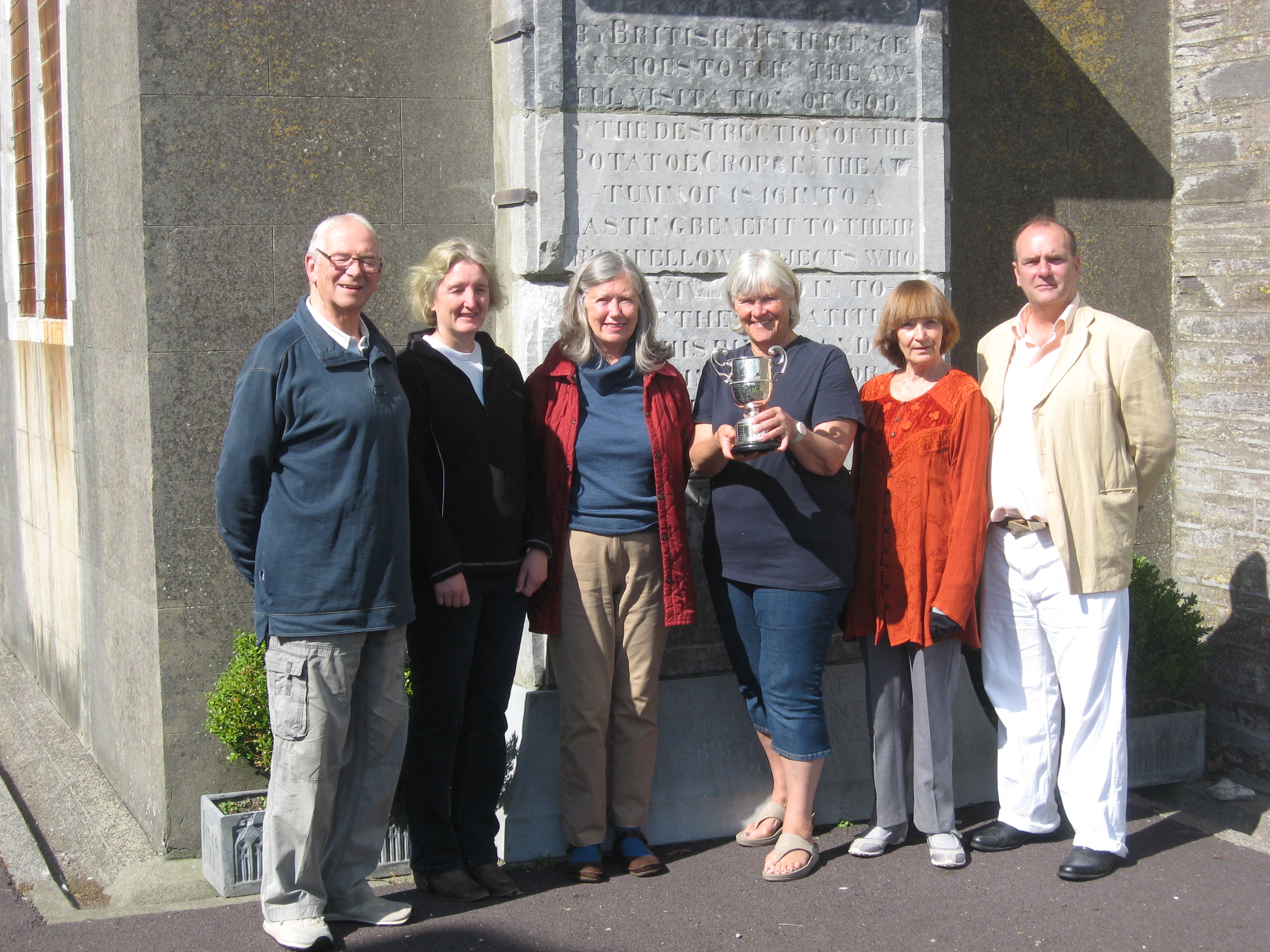For many years the only bell in Abbeystrewry Church was on the roof of the tower. A rope came from the roof, via the tower walls and into the main body of the Church where the verger rang it. How it came to be there; who paid for it; and where it came from is unknown — which is to say, all is unrecorded.
In 2002 a small group of enthusiastic bell-ringers living locally thought it wasn’t beyond the realms of possibility that a brand new peal could be installed at Abbeystrewry. The incumbent at that time, the Rev. Trevor Lester, was supportive and so fund-raising began. Planning permission was sought from the County Council and subsequently given with no problem or opposition.
As there were no Irish bell-engineers at that time, three UK companies were asked to submit proposals for installing the bells. St George’s Church in Cork had been de-commissioned and the bells removed from the tower were looking for a home. Unfortunately the Cork bells were too large to be accommodated in the tower at Abbeystrewry. The only option was to cast a new peal and this is what was decided upon. Matthew Higby Bell Hangers, based in Somerset, were awarded the contract and a local builder, Martin Harte, was contracted to build a ringing chamber within the tower, steps to the tower door, and to be on hand to assist Matthew Higby’s crew.
Because of the bell on the tower roof and a beautiful ceiling above the baptism font at the ground floor of the tower, the bells had to be hauled up the side of the tower and through the ringing chamber door. The bells had to be fairly small to get through the door and even so a groove in the wall either side of the door had to be drilled in order to get the tenor bell through.
The ringing chamber is small, 8 feet by 10. The 6 bells are in a room above this, all six bells on the same level. The tenor bell weighs 3 cwt. Each bell is inscribed with the opening line of a hymn — each chosen by the donor. The weights and inscriptions on the bell are listed below.
The bells were cast at the Whitechapel Foundry in London. The mould for the tenor bell was used twice — once for the Abbeystrewry peal and the other to cast the bell that was given by the City of London to the City of New York to hang at what was the World Trade Center site (the bell is now in a memorial park there).
The bells were installed in November 2002 and dedicated by the Bishop, the Right Reverend Dr Paul Colton. They have been rung regularly since, the Abbeystrewry ringers twice having won the Irish Change Ringers Association (Southern District)’s Cherry Cup in that time — 2007 & 2014.
Abbeystrewry’s bells were the 34th tower in Ireland with bells rung for change ringing. The tower is also distinguished by being the most westerly tower in Europe with ringable set.

Abbeystrewry bell-ringers (from left), Geoffrey Philips, Jane Hough, Catherine Ebeling, Diana Pitcher, Anne Dex, and Perry O’Donovan, winners of the 2014 Cherry Cup, the Irish Association of Change Ringers’ cup competition for change ringing (Southern District).
The Bells’ Inscriptions
1.
BE NOT AFRAID, I GO BEFORE YOU ALWAYS
The Treble Bell was given by Diana Pitcher in thanks for the pleasure that bell ringing gives
2.
BE THOU MY VISION, O LORD OF MY HEART
Shane O’Neill gave the 2nd Bell
3.
LOVE DIVINE, ALL LOVES EXCELLING
The 3rd Bell was donated in memory of the loving spirit of James S Filhol, died Baltimore 2002, aged 33 years
4.
O HEAR US WHEN WE CRY TO THEE
Chris Boon who died on Christmas Eve 2003 gave the 4th Bell
5.
GUIDE ME, O THOUGH GREAT JEHOVAH
The 5th Bell commemorates the birth of Meadhbh Ni Cheallaigh on 1 December 2001
6.
O COME, ALL YE FAITHFUL
The Irish Association of Change Ringers donated the Tenor Bell
